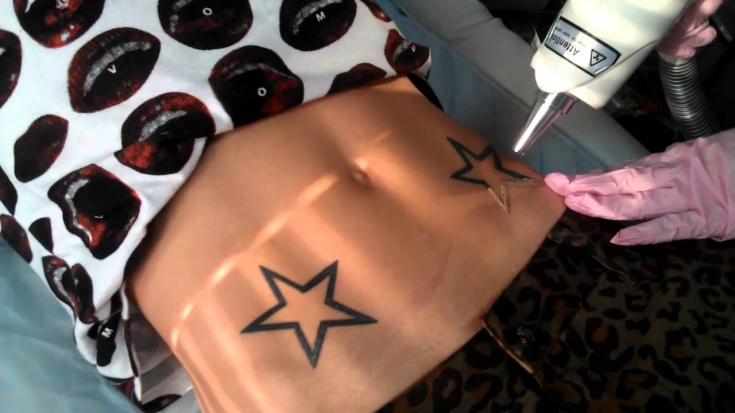The pace of development of the tattoo industry is amazing: worldwide sales associated with tattooing reach 2 billion dollars a year. Obviously, the removal of such a work of art will also be in high demand. The results of a survey presented by the British Dermatological Association showed that more than 30% of people regret that they once got a tattoo, but only 10% of them ultimately decide to remove the tattoo. Q-switch lasers are currently used for effective tattoo removal. Read more about the benefits of which you can read on estet-portal.com in this article.
Basic Methods for Effective Tattoo Removal
People who regret getting a tattoo tend to get rid of it as quickly and painlessly as possible. But the possibility of achieving an aesthetic result appeared not so long ago – in the 1960s, when lasers began to be used to remove unwanted tattoos.
Prior to the use of laser for tattoo removal, many other methods including chemical peels, abrasion techniques combined with ablative treatments, tattoo excisions, and other treatments were not successful and had high complication rates.
At this stage, the Q-switch laser is considered the gold standard for tattoo removal. Of course, there are other types of laser therapy: argon laser or fractional CO2 laser. Their use has faded into the background due to the high risk of unwanted complications, in the form of post-inflammatory hyperpigmentation, burns and scars. Q-switch laser, unlike other methods, provides quick and painless tattoo removal.
Tattoo Removal:
• mechanism of Q-switch laser effect on a tattoo;
• secrets of effective laser tattoo removal;
• Possible complications of laser tattoo removal.
Mechanism of Q-switch laser effect on tattoo
Q-switch lasers emit nanosecond pulses with high peak power. These pulses are calculated based on the time it takes for the tattoo pigment to break down, minimizing damage to the surrounding tissue. After the pigments are broken down into small fragments, these particles are phagocytized by the cells of the immune system. To understand how tattoo destruction occurs, we must understand the theory of selective photothermolysis. Its essence lies in the fact that in order to effectively process the tattoo pigment, the wavelength of the light used must be absorbed by the tattoo pigment as much as possible.

Secrets of effective laser tattoo removal
Surface tattoo pigments use a wide field of laser irradiation, while deeper laser penetration requires a narrow field. For effective laser exposure, it is necessary that:
• laser radiation penetrated deep into the skin;
• laser radiation was absorbed by the target chromophore to a lesser extent than by surrounding tissues;
• The length of the laser pulse was as short as possible. This provides heat dissipation to prevent thermal damage to the skin.
Also, it should be noted that black ink is the easiest to work with. White ink, on the other hand, has the least absorbency and is therefore the most difficult to remove. Given this, whites, yellows, and other light colors tend to be the most difficult to remove.
Possible complications of laser tattoo removal
Despite the effectiveness of laser tattoo removal, this procedure can be fraught with a number of complications, such as scarring, hypopigmentation, hyperpigmentation, incomplete tattoo removal, bleeding and darkening of the tattoo ink.
Immediately during the procedure or after tattoo removal with the Q-switch laser, pain may occur, to prevent which, the procedure is performed under local anesthesia.
The number of procedures required to completely remove a tattoo is primarily affected by how long ago it was made. Secondly, the color of the tattoo, the ink used for its application, as well as its location on the body are important. Sometimes tattoo removal becomes quite a difficult task, especially when it comes to a multi-layered or multi-colored tattoo. As a result of processing such a design with a laser, traces of ink may remain, which look like a faded tattoo.
In order to avoid complications, it is very important to find an individual approach to each patient and each tattoo.
The article was written based on the materials of the online magazine Aesthetics







Add a comment